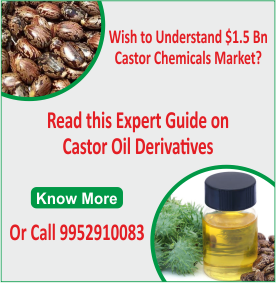Castor Crop Growth
Fertilizers
The fertilizer dose recommended for castor is 40 N-40 P-20 K kg/ha.
Nitrogen Recommendations for Castor Beans
|
Soil Organic Matter % |
Nitrogen Application Rate lb/acre |
|
< 2 |
100 |
|
2–4.9 |
80 |
|
5–10 |
60 |
|
> 10 |
40 |
Castor exhausts the soil quickly. So 45–135 kg/ha of nitrogen is added in split applications in some areas. Leaves, stalks and seed hulls are disked into the field following harvest. In India 89 kg/ha of nitrogen gives the highest yields. Where phosphorus is deficient, 40–50 kg/ha of P2O5 is recommended.
Water
Castor, being a deep rooted crop, is fairly resistant to drought.
Rainfall
The castor plant is a tropical/sub-tropical species and grows in areas of low rainfall. It is sensitive to extreme climatic changes, especially extreme changes in rainfall distribution. The minimum rainfall needed by the castor crop is 38-50 cm (15-20 in.).il Organic Matter %
Castor exhausts the soil quickly. So 45–135 kg/ha of nitrogen is added in split applications in some areas. Leaves, stalks and seed hulls are disked into the field following harvest. In India 89 kg/ha of nitrogen gives the highest yields. Where phosphorus is deficient, 40–50 kg/ha of P2O5 is recommended.
Irrigation
The crop must have sufficient moisture during its growing period. In Brazil 2,400 cu.m of water is applied during the 3 months between flowering and harvest, with about 400 cu.m being applied at 15 day intervals. Furrow irrigation is preferred, but adoption of sub-irrigation has been found to reduce weed problems.
Normally, irrigation commences after plants have 6–8 leaves. Over-irrigation on heavy soils should be avoided; final irrigation should be 3–4 weeks before harvest.
Climate
Castor is essentially a warm season crop, cultivated in tropical, subtropical and temperate regions. Its cultivation is largely confined to countries lying between 400N and 400S latitudes. It grows in tropical and subtropical regions as a perennial plant and in temperate climate as an annual plant.
Diseases seldom do much damage – though leaf spot (Cercospora reicinella), Rust (Melampsora oricini) and Alternarialeaf spot may occur. The seedling blight and Alternaria blight cause serious losses to this crop. The sowing of the crop in low-lying and water-logged areas should be avoided to prevent the seedling blight from appearing.
Weed Control
Weed control for castor crop is based on a pre-sowing application of trifluraline and a pre-emergence application of linuron. Due to lack of selectivity, both products are usually applied by farmers before sowing.
Harrowing is generally carried out when plants have between 2 and 5 leaves in order to improve chemical weed control.
Some pre-emergence herbicides may be suitable for weed control but subsequent measures will also be likely required.








